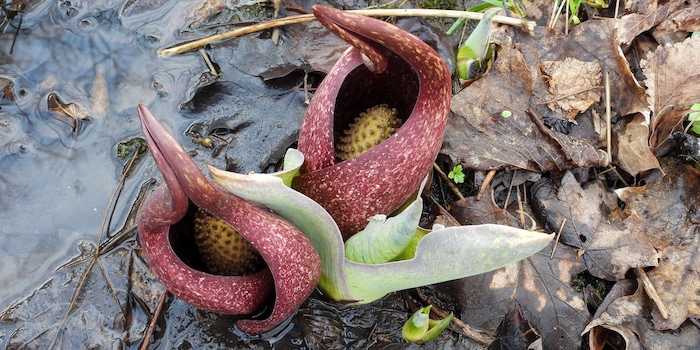
Stinking plants produce foul odour with special enzyme
Some flowers imitate the odour of faeces or rotting flesh to attract pollinators. This ability has apparently evolved several times in the plant kingdom.
Once you've caught the smell of stinky cabbage (Symplocarpus foetidus) or the infamous giant rafflesia (Rafflesia arnoldii), you'll never forget the aroma. They are considered the most malodorous plants in the world. However, the stench, which imitates faeces and rotting flesh, exerts an irresistible attraction on the beetles and flies that pollinate the flowers. A research team led by biologist Yudai Okuyama from the National Museum of Nature and Science in Tsukuba, Japan, wanted to find out exactly how the plants produce the odour molecules. The results, which were published in the journal «Science», also show that smelly flowers are surprisingly common in the plant kingdom.
Plants and insects have coexisted for millions of years. In addition to visual and structural adaptations, flowers have evolved the ability to produce complex mixtures of volatile compounds that allow the plant to communicate with insects and transmit specific messages. The emission of these odours can either entice insects to visit the plant's reproductive organs, increasing the chance of successful pollination, or repel unwanted visitors.
Okuyama and his team took on the genus Asarum, one of Japan's most diverse plant groups, for their study. The focus was on the question of how the evolutionary drive to court different pollinators could have influenced this diversity. During their analyses, the researchers discovered that some Asarum species emit a foul carrion odour. They catalogued the volatile chemicals produced by the flowers of the 53 known Asarum species and then looked for differences in gene and enzyme activity between stinky and non-smelly flowers.
Stinking diversity
In this way, they were able to identify a class of enzymes, the so-called disulphide synthases, which convert sulphur-containing molecules into the compounds that are responsible for the stink of the flowers. Independently of this, similar enzymes have evolved in two other plant genera, Symplocarpus and Eurya. In the course of evolution, the plants appear to have produced a copy of the SBP1 gene and modified it to produce three other amino acids, the researchers hypothesise. Among the Asarum species, the ability to produce dimethyl disulphide has been acquired and lost more than 18 times. In many species, such gene duplicates are the source of new traits. The copy can mutate without affecting the function of the original gene.
The study makes it unmistakably clear how much can still be learnt about stinky plants, said Robert Raguso, an ecologist at Cornell University in Ithaca, New York, who was not involved in the study, to «Nature». «Stinky plants are more complicated than we thought», he explains. «There is still a lot to discover.» For example, some flowers are able to emit different compounds at different times - first attracting a pollinator and then changing their odour to drive the insect away so that it deposits the pollen on other flowers. And there are flowers that imitate the odour of different attractants as required, such as insect blood and rancid cheese. (with material from «Nature News»)
Spectrum of Science
We are a partner of Spektrum der Wissenschaft and want to make sound information more accessible to you. Follow Spektrum der Wissenschaft if you like the articles
Originalartikel auf Spektrum.deExperts from science and research report on the latest findings in their fields – competent, authentic and comprehensible.